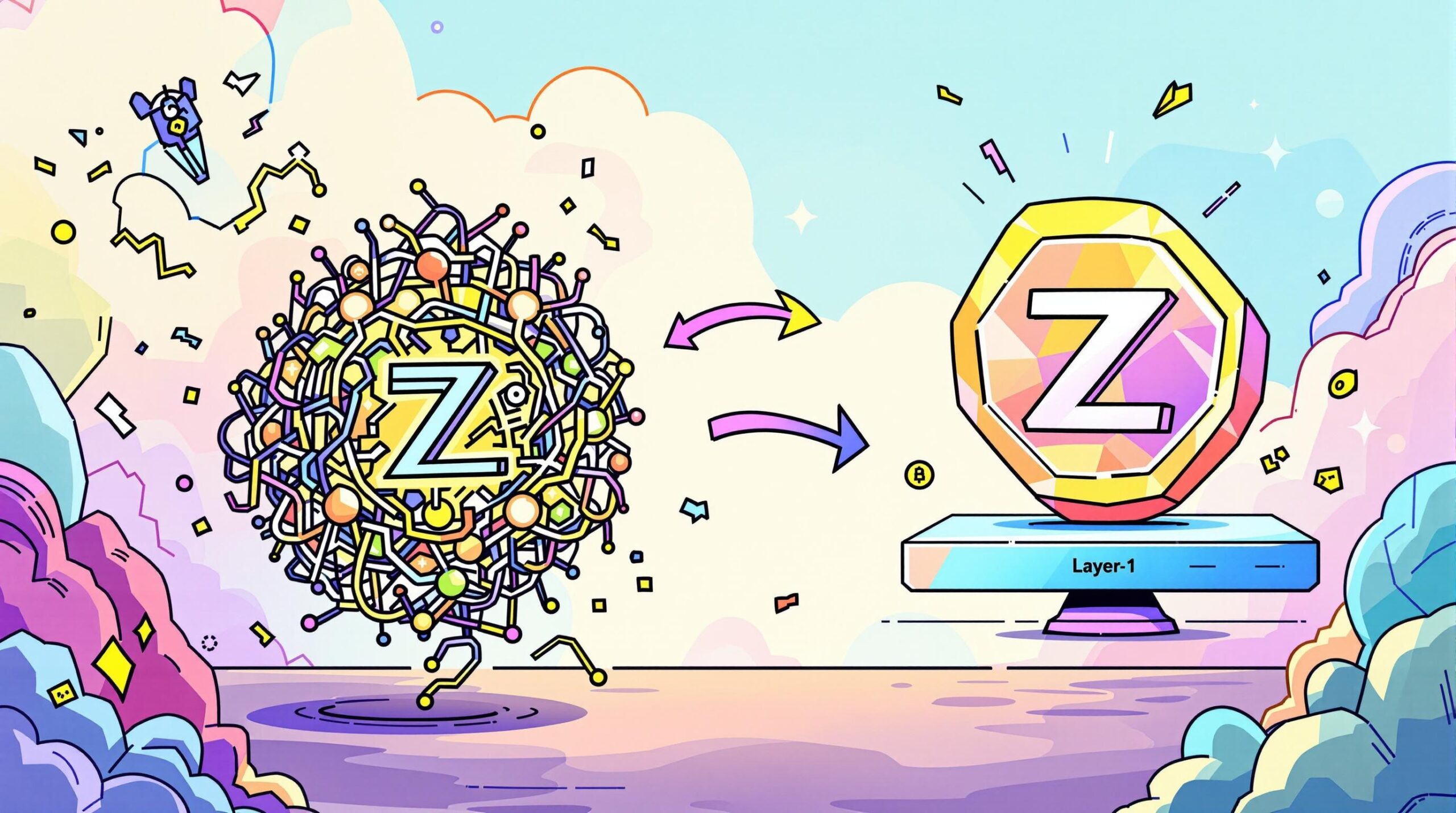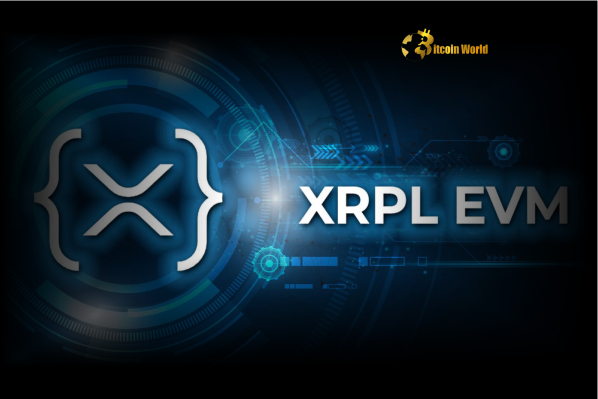BitcoinWorld

Horizen’s Pivotal Shift: Unlocking New Frontiers on Coinbase’s Base Network
The cryptocurrency landscape is in constant flux, marked by relentless innovation and strategic evolution. A significant development shaking up the privacy-focused blockchain sector is the monumental shift of Horizen (ZEN) from its native layer-1 network to Coinbase’s burgeoning Base ecosystem. This isn’t just a simple move; it’s a strategic pivot, dubbed Horizen 2.0, designed to redefine its presence and utility within the broader Web3 space.
What is Horizen and Why Did it Need to Evolve?
Originally launched as ZenCash in 2017, Horizen quickly established itself as a prominent privacy-focused blockchain. Its core mission revolved around providing enhanced privacy and security for digital transactions, leveraging technologies like zk-SNARKs for shielded addresses. As a standalone layer-1 blockchain, Horizen built its own infrastructure, including a robust node network and a unique sidechain architecture.
However, the rapid evolution of the blockchain industry has presented both opportunities and challenges for independent layer-1 networks. While offering sovereignty, standalone L1s often face hurdles related to:
- Scalability: Handling a high volume of transactions without compromising speed or cost.
- Interoperability: Seamlessly connecting and interacting with other blockchain networks and their diverse ecosystems.
- Developer Adoption: Attracting and retaining developers who often prefer more established or widely used environments.
- Liquidity Fragmentation: Spreading liquidity across multiple chains, which can hinder market depth and accessibility.
Recognizing these dynamics, the Horizen team embarked on a strategic re-evaluation, culminating in the vision for Horizen 2.0. This evolution isn’t about abandoning its roots but rather about adapting to the current landscape to ensure long-term relevance, broader adoption, and continued innovation in privacy-preserving technology.
Why is Horizen Migrating to Coinbase’s Base?
The decision for Horizen to migrate its ZEN token to Coinbase’s Base network as a standard ERC-20 token is a pivotal moment. This move is not arbitrary; it’s a calculated strategy to leverage the strengths of an established, growing ecosystem while maintaining its core principles. Base, an Ethereum Layer-2 (L2) blockchain incubated by Coinbase, offers several compelling advantages:
- Ethereum’s Security & Decentralization: As an L2 on Ethereum, Base inherits the robust security and decentralization of the Ethereum mainnet, providing a strong foundation for Horizen‘s operations.
- Scalability & Lower Fees: Base is designed for high throughput and significantly lower transaction fees compared to Ethereum, making interactions with ZEN more accessible and cost-effective for users.
- Coinbase Integration: Being incubated by Coinbase, Base benefits from potential deep integration with one of the world’s largest cryptocurrency exchanges, potentially opening doors to a massive user base and increased liquidity for ZEN.
- Developer Familiarity: As an EVM-compatible chain, Base offers a familiar environment for developers already working with Ethereum, simplifying the transition and fostering new application development around ZEN.
- ERC-20 Standard: By becoming an ERC-20 token, ZEN instantly gains enhanced interoperability across the vast Ethereum ecosystem, making it easier to integrate with DeFi protocols, wallets, and other dApps.
This Horizen migration is a testament to the project’s adaptability and its commitment to placing ZEN where it can thrive, benefit from network effects, and reach a wider audience without sacrificing its technical aspirations.
What Are the Key Benefits of Horizen’s Migration for ZEN Holders?
For existing and prospective Horizen (ZEN) holders, this strategic migration unlocks a plethora of benefits that could significantly enhance the token’s utility, accessibility, and overall value proposition:
- Enhanced Interoperability: As an ERC-20 token, ZEN will seamlessly integrate with thousands of existing Ethereum-compatible decentralized applications (dApps), wallets, and services. This means easier swaps on DEXs, participation in lending/borrowing protocols, and broader wallet support.
- Access to Base’s Growing Ecosystem: Base is rapidly becoming a hub for innovative projects and a significant user base, particularly those within the Coinbase ecosystem. ZEN holders will gain direct access to this vibrant environment, potentially leading to new use cases and increased demand for the token.
- Improved Liquidity and Market Depth: Listing on an L2 like Base, especially one with strong ties to a major exchange, can lead to increased trading volume and liquidity. This makes it easier for users to buy and sell ZEN, reducing price volatility and improving market efficiency.
- Lower Transaction Costs: Performing transactions with ZEN on Base will incur significantly lower gas fees compared to the Ethereum mainnet or even some other L1s, making micro-transactions and frequent interactions more feasible and affordable for all users.
- Leveraging Ethereum’s Security: While operating on Base, ZEN transactions ultimately benefit from the robust security guarantees of the underlying Ethereum network, providing a high level of trust and reliability.
The Horizen community stands to gain significantly from these advancements, positioning ZEN not just as a privacy coin, but as a versatile digital asset within a highly interconnected blockchain landscape.
How Will Horizen’s Layer-3 Appchain Maintain Privacy on Base?
One of the most innovative aspects of the Horizen 2.0 relaunch, alongside the ZEN token migration, is the development and launch of a layer-3 privacy-focused appchain on Base. This demonstrates Horizen‘s unwavering commitment to its core mission of privacy, even as it embraces a more public L2 environment.
Here’s how this layer-3 strategy works:
- What is a Layer-3? A layer-3 blockchain is an application-specific chain built on top of a layer-2 network (like Base). They are designed to offer highly customized functionalities, often focusing on specific use cases that require unique performance or privacy features.
- Privacy by Design: Horizen‘s layer-3 appchain will be engineered with privacy at its core. This means it can implement advanced cryptographic techniques, such as zero-knowledge proofs (ZKP), to enable private transactions and computations without revealing sensitive information on the public Base L2.
- Specialized Functionality: Unlike a general-purpose L2, a dedicated L3 allows Horizen to tailor the chain’s rules and architecture specifically for privacy-preserving applications, optimizing for performance and security in that niche.
- Scalability for Privacy: By offloading privacy-intensive operations to its own L3, Horizen can achieve greater scalability for private transactions, preventing congestion on the Base L2 while still leveraging Base for settlement and interoperability with the broader Ethereum ecosystem.
This innovative Horizen layer-3 appchain underscores its commitment to pushing the boundaries of privacy technology, proving that projects can integrate into mainstream ecosystems while still offering specialized, high-demand features.
What Should Horizen (ZEN) Holders Do During This Transition?
For existing Horizen (ZEN) holders, navigating this transition requires attention to official announcements and a clear understanding of the process. While the total supply of ZEN remains capped at 21 million, the migration from its native layer-1 to an ERC-20 token on Base means a change in the underlying network where your ZEN resides.
Here are key considerations for Horizen holders:
- Stay Informed: Regularly check official Horizen communication channels (website, Twitter, Discord, blog) for precise instructions regarding the migration process. Do not rely on unofficial sources.
- Exchange Support: If your ZEN is held on a centralized exchange, it is highly probable that the exchange will handle the token swap automatically. Confirm this with your specific exchange.
- Self-Custody Wallets: If you hold ZEN in a self-custody wallet (e.g., Ledger, Trezor, or software wallets), you will likely need to follow a specific bridging or swapping mechanism provided by Horizen to convert your native ZEN to the new ERC-20 ZEN on Base.
- Security First: Be extremely cautious of phishing attempts or scams. Only use official links and tools provided directly by Horizen. Never share your private keys or seed phrases.
- Understand the New Ecosystem: Familiarize yourself with how Base works, including its wallet compatibility and gas fee structure, as your ZEN will now operate within this environment.
For existing Horizen holders, understanding the mechanics of this transition is crucial to ensure a smooth and secure transfer of your assets to their new home on Base.
What Challenges Might Horizen Face in Its New Chapter?
While the Horizen migration to Base presents immense opportunities, it is not without its potential challenges. Navigating these hurdles will be critical for the project’s long-term success and widespread adoption:
- User Education and Adoption: A significant challenge will be educating the existing Horizen community and new users about the technical nuances of the migration, the benefits of Base, and how to interact with the new ERC-20 ZEN token and the Layer-3 appchain. User confusion can hinder adoption.
- Maintaining Privacy Credibility: Moving to a more public L2 like Base, even with a dedicated privacy L3, might raise questions among staunch privacy advocates. Horizen will need to clearly articulate how its privacy guarantees remain robust and distinct from general-purpose L2 transactions.
- Competition on Base: While Base offers a thriving ecosystem, it is also a competitive one. Horizen will need to carve out its niche and demonstrate compelling value propositions to stand out amidst numerous other projects launching or migrating to the network.
- Technical Implementation Risks: Any large-scale blockchain migration involves complex technical work. Ensuring the bridging mechanisms are secure, efficient, and bug-free is paramount to avoid potential exploits or loss of funds during the transition.
- Ecosystem Integration: Beyond the initial migration, successful integration means fostering a vibrant ecosystem around the new ERC-20 ZEN and the Layer-3 appchain, encouraging developers to build and users to engage with its privacy features.
While the Horizen migration offers immense potential, addressing these challenges proactively will be key to realizing its full vision and solidifying its position in the evolving blockchain landscape.
Is Horizen’s Migration a Blueprint for Other Blockchains?
Horizen‘s strategic pivot could serve as a compelling case study and even a blueprint for other independent layer-1 blockchains grappling with issues of scalability, interoperability, and ecosystem growth. The trend of L1s exploring or adopting L2 solutions is gaining momentum, and Horizen‘s approach offers valuable insights:
- Embracing Modularity: The move signifies a shift towards a more modular blockchain architecture, where specialized functions (like privacy in Horizen‘s case) can reside on dedicated appchains while leveraging the security and liquidity of a broader L2/L1 base layer.
- Strategic Partnerships: Leveraging the ecosystem of a major player like Coinbase (via Base) provides a significant advantage in terms of user reach, developer tools, and institutional trust, which can be difficult for smaller L1s to build independently.
- Adapting to Market Demands: The crypto market is dynamic. Horizen‘s decision demonstrates the importance of adaptability and willingness to re-architect in response to evolving technological landscapes and user needs.
- The Future of Appchains: The launch of Horizen‘s layer-3 appchain on Base highlights the growing importance of application-specific blockchains that can offer tailored performance and features for niche use cases, without having to build an entire L1 from scratch.
As the blockchain space matures, we may see more projects follow Horizen‘s lead, opting for strategic integrations and modular designs to optimize for specific functionalities while benefiting from the network effects of larger ecosystems.
The Horizen 2.0 relaunch represents a bold, forward-thinking strategy that positions ZEN for enhanced utility, broader adoption, and continued innovation in privacy technology. By migrating to Coinbase’s Base as an ERC-20 token and launching a dedicated layer-3 privacy appchain, Horizen is not just adapting to the future of blockchain; it’s actively shaping it. This strategic move aims to combine the best of both worlds: the vast interoperability and liquidity of the Ethereum ecosystem (via Base) with Horizen‘s unwavering commitment to pioneering privacy solutions. The journey ahead promises to be an exciting one for the Horizen community and the broader Web3 landscape.
Frequently Asked Questions (FAQs)
What is Horizen (ZEN)?
Horizen (ZEN) is a privacy-focused blockchain project that initially launched as a standalone layer-1 network, emphasizing secure and private transactions through advanced cryptographic techniques. It is now evolving with its Horizen 2.0 relaunch.
Why did Horizen migrate to Base?
Horizen migrated to Coinbase’s Base network to enhance scalability, improve interoperability, access a larger user base, benefit from lower transaction fees, and leverage the security of the Ethereum ecosystem, all while maintaining its privacy focus through a new layer-3 appchain.
What does being an ERC-20 token mean for ZEN?
Becoming an ERC-20 token means ZEN will adhere to the Ethereum token standard, allowing for seamless integration with the vast array of Ethereum-compatible wallets, decentralized exchanges (DEXs), DeFi protocols, and other applications, significantly increasing its utility and accessibility.
What is Horizen’s Layer-3 appchain?
Horizen’s layer-3 appchain is a specialized, privacy-focused blockchain built on top of the Base layer-2 network. It is designed to provide highly customized privacy features and applications, allowing Horizen to deliver its core privacy mission while leveraging Base’s infrastructure.
How does this affect existing ZEN holders?
Existing ZEN holders will likely need to follow official instructions from Horizen or their chosen exchange to convert their native ZEN tokens to the new ERC-20 ZEN on Base. The total supply of ZEN remains capped at 21 million.
Is Horizen still focused on privacy after this move?
Yes, Horizen remains deeply committed to privacy. While the ZEN token is moving to Base as an ERC-20, the project is simultaneously launching a dedicated layer-3 appchain specifically designed to maintain and advance its privacy-preserving capabilities.
If you found this deep dive into Horizen‘s strategic migration insightful, don’t keep it to yourself! Share this article on your social media channels and spark a conversation about the future of blockchain technology and privacy-focused cryptocurrencies. Your insights help us grow and continue delivering valuable content.
To learn more about the latest explore our article on key developments shaping Horizen‘s strategic moves.
This post Horizen’s Pivotal Shift: Unlocking New Frontiers on Coinbase’s Base Network first appeared on BitcoinWorld and is written by Editorial Team





